
The Art Department at StFX offers four levels of courses: each advancing level of study allows students to apply skills and knowledge acquired from the earlier level to generate new learning and confidence.
100 Level Courses
100 level courses in both Art Studio and Art History offer essential knowledge and training that form the foundation for all further study in the Art Department. Art Studio courses provide students with the fundamentals of drawing, design, and colour theory. Art History courses survey the development of artistic expression in the Western world from pre-historical cave paintings to concepts expressed by modern artists. Courses at this level are the prerequisites for all upper levels of study.
Art Studio Courses
101 Introduction to Drawing I
102 Introduction to Drawing II

This complementary pair of introductory courses allows students to acquire the fundamental skills of drawing, and lets them explore form, content, and subject matter in a variety of drawing media. Artistic awareness is achieved by introducing students to the language of art and to the creative accomplishments of the past. Speaking clearly about one's artistic ideas and concerns by using the vocabulary of formal analysis becomes an important aspect of "seeing", as identification allows for critical studio practice and discussion. Art101 establishes basic understanding; Art102 develops skills and themes initiated during Art101.
Art 101 - 3 Credits
No prerequisite.
Art 102 - 3 Credits
Prerequisite: Art 101 Introduction to Drawing I, or portfolio demonstrating drawing skills.
Students who have previously taken Art 100 are not eligible to enrol in either Art 101 or Art 102.
115 Introduction to Design

This course focuses on design principles and elements such as unity, balance, repetition, line, shape, and colour. The course provides students with a vocabulary and working knowledge of visual communication and how the disciples of design influence and create culture and communication. Students develop their visual problem-solving skills and understanding of visual communication through studio projects and class discussions.
3 Credits
No prerequisite.
125 Materials and Methods

This course will afford students the opportunity of working in a variety of art media, (two-dimensional and possibly three-dimensional) while exploring techniques, presentations, concept and materials. Projects may include painting, printmaking, sculpture, animation, textiles and more. Students with some prior knowledge of drawing and/or art experience will benefit most from this course.
3 Credits
No prerequisite, though ART 101/102 is recommended.
145 Introduction to Colour

This course deals with the vocabulary, nature and physical properties of colour: hue, value and intensity. Studio assignments provide practice in learning colour relationships in unified and contrasting colour schemes.
3 Credits
No prerequisite.
155 The Scientist's Sketchpad

This interdisciplinary course develops drawing and observational skills alongside a critical awareness of the role of image-making in knowledge production about the natural world. Students will learn drawing techniques from a studio art instructor and apply them to the study of specimens, under the supervision of a biology instructor. An art history instructor will teach slow looking techniques and the history of collaborations between artists and scientists in the last 500 years.
3 Credits
No prerequisite.
Art History Courses
141 Art and Society I: From Caves to Cathedrals

Long before human beings developed written language, we were making works of art. This introductory survey examines art and architecture within the intellectual and social contexts of their historical production. It provides a working knowledge of the history of art from prehistory through Classical Greece and Rome, to the great cathedrals of the Medieval period. Students will begin to develop critical tools for studying visual culture, and achieve a deeper understanding of cultural history.
3 Credits
No prerequisite.
142 Art and Society II: From Renaissance to Revolution

This section of the art history survey begins with works of art and architecture of the Italian Renaissance, where new ideas (including the notion of genius) had major repercussions for the cultural and artistic history of subsequent periods, including the Baroque, Romanticism, the 20th Century, and our contemporary era. Students will learn new ways of observing and interpreting art, enrich their appreciation of art and architecture, and further deepen their understanding of cultural and intellectual history.
3 Credits
No prerequisite.
200 Level Courses
200 level courses build upon the fundamental information students have mastered at the 100 level. Art Studio courses offer a wide variety of artistic media for students to explore and apply their newly-acquired skills and knowledge: theatre design, printmaking, painting, stained glass, and textiles. Art History courses focus on historical periods of artistic expression such as Medieval, Baroque, Modern, and Contemporary art, as well as specific stylistic movements such as Impressionism.
Art Studio Courses
202 Introduction to Scenic Design

This course will cover the steps in the creation of theatre sets and lighting designs. Both sections of the course will be, principally, project based with ‘hands on’ experience at each stage of the growth from conception to finished project. Facts and theory, while covered, will be subordinate to the creative process. There will be a series of smaller projects each week, which in turn will lead to the completion of a major design project for a play chosen by the instructors.
3 Credits
Prerequisite: Art 101 & 102 Introduction to Drawing, or permission of the instructor based on the student’s resume of theatre experience or letter of interest.
204 Introduction to Painting I
205 Introduction to Painting II

This pair of complementary courses will introduce you to the fundamental principles of representational painting. You’ll begin by exploring colour, the formal language of painting, and the techniques and tools available to an artist to create expressive and dynamic paintings. In the first semester, there is an emphasis placed on developing a disciplined, healthy working practice by managing time, materials and methods effectively. As foundation skills develop, individual exploration is encouraged and fostered by critiques and the exchange of ideas. There will also be lectures on historical themes to provide you with knowledge of the rich history of the medium. Other discussions delve into theory, critical issues and the exciting developments of painting in contemporary art.
Students who have previously taken Art 200 Painting I or ST Art 299 Introduction to Painting may not enrol in these courses.
Art 204 - 3 Credits
Prerequisite: Art 101 & 102 Introduction to Drawing
Art 205 - 3 Credits
Prerequisite: Art 204 Introduction to Painting I, or portfolio demonstrating painting skills.
211 Stained Glass Studio I

There is nothing quite like a beautiful stained glass artwork to transform a space! Imagine if it were created by---you! Step by step, I'll introduce you to the techniques of working with stained glass using the copper-foil technique: transferring patterns, cutting and grinding, soldering (yes you will melt metal), assembling, soldering, and finishing. Over the course of the term, you will produce a unique 2D panel. You are encouraged and supported to work in your own style, and draw upon your passions, identity, experiences and culture to create the design. Major "ooohh/aaaaw" factor when you bring your project home!
3 Credits
Prerequisite: Art 101 & 102 Introduction to Drawing, or Art 115 Introduction to Design, or portfolio demonstrating drawing and design skills.
212 Stained Glass Studio II

StFX student artwork
Everything you loved about Stained Glass I, only more! (and in 3 dimensions) This hands-on studio course is a continuation of Stained Glass Studio I, introducing intermediate-level techniques. I'll show you how to design a 3D stained-glass structure such as a lamp, as well as do all the steps in the technical process: transferring patterns, cutting and grinding, soldering panels, assembling, soldering and finishing. You are encouraged to design in your preferred art style, and express your individual identity, experiences, and culture. Imagine the “light bulb moment,” and the amazement of your fans!
3 Credits
Prerequisite: Art 211 Stained Glass Studio I or portfolio demonstrating stained glass design and studio skills.
221 Batik Studio

Have you ever heard of Batik? Not everybody has. But if you have ever seen sarongs from Bali or traditional cloth from West Africa or India, you have probably seen batik! Batik is a Javanese word for an ancient art form practiced in various parts of the world, dating from at least 1000 BCE. Designs and images are created on textiles by the alternate application of dyes and a “resist” such as melted wax. My aim in this course is to provide you with technical batik skills, while encouraging you to create artwork inspired by your own personal journey, identity, and culture. The course also looks at other forms of resist dyeing, such as tie-dye and tritik (shibori).
3 Credits
Prerequisite: Art 101 & 102 Introduction to Drawing, or Art 115 Introduction to Design, or portfolio demonstrating drawing and design skills.
222 Weaving Studio

This course offers an introduction to tapestry weaving and its techniques. Students will initially learn to weave a tapestry based on a sampler designed by the instructor. Students will then apply this knowledge to a small-format tapestry of their own design. An artist’s statement and a written exam are also aspects of course evaluation.
Tapestry is a technique of weaving that is more than 2000 years old; it is practiced by cultures around the world. The cloth produced by various groups of weavers takes on different aesthetics and functions according to each culture. Besides sharing a common technique, tapestry woven cloth plays numerous cross-cultural roles: social, spiritual, political, economic, and artistic. These many facets of tapestry will be explored through a series of videos that highlight cultural traditions and international perspectives.
3 Credits
Prerequisite: Art 115 Introduction to Design, or Art 145 Introduction to Colour.
227 Introduction to Handbuilding Ceramics
This is a hands-on, introductory studio sculpture class with an emphasis on creating vessels and architectural forms, and exploring figurative approaches in clay. Students will be taught the processes of clay sculptural building, including mould-making, plaster-casting, and plasticine. Students will develop and hone hand-eye coordination as well as fine motor skills through tactile 3-D modelling in clay.
3 Credits
Prerequisite: Art 101 & 102 Introduction to Drawing.
233 Introduction to Printmaking

An introduction to printmaking, this course presents intaglio and relief print through three printmaking techniques: line etching, 2-plate linocut and 4-colour reductive linocut. Each technique is explained through instructional demonstrations following examination of printmaker’s works. While creating three original images, students will acquire design skills, learn to safely use etching and carving tools on metal and linoleum blocks, gain appreciation for materials such as specialty papers and inks, and learn how to print on a traditional intaglio press and by hand with a spoon. This course will foster artistic expression while developing technical accuracy and precision. There is no pre-requisite for this course, all are welcome. Find out more about printmaking from the Museum of Modern Art, New York - What is a Print?
3 Credits
Prerequisite: Art 101 & 102 Introduction to Drawing.
240 Pastels

The essence of pastels is the aesthetic experience of drawing with colour. The course is designed to introduce chalk pastels as a painting medium. With the various techniques that create the beautiful effects of pastel painting, the student will learn basic colour theory and composition. Class participation in problem solving discussions about painting will be encouraged. The course will explore the various ways to mix, layer and blend colours with chalk pastel. Class assignments will explore the genres of still life, landscape and portrait. Drawing skills are strongly recommended.
3 Credits
Prerequisite: Art 101 & 102 Introduction to Drawing.
255 Watercolour - Techniques and Approaches

In this course students familiarize themselves with the materials and the basic techniques of transparent watercolour painting. Instruction will include various classic and innovative approaches to this versatile medium, using works by well-known masters of watercolour painting as a jumping-off point for student's own exploration in the medium.
3 Credits
Prerequisite: Art 101 & 102 Introduction to Drawing, or equivalent.
259 Introductory Filmmaking

Students will learn the basic principles of storytelling, cinematography, sound, editing, interviewing, and producing. Operating as a one-person crew, each student will create three video projects using their own equipment (usually their phone) and free editing software. Additionally, students will expand their understanding of cinema through watching films, focusing on independent documentary works by Canadian filmmakers who are underrepresented in the industry (women, Indigenous, Black, People of Colour, and LGTBQ2S+).
3 Credits
No prerequisite.
265 Introductory Animation

In this course, students will learn the basics of animation. Projects include simple 2D animation (flip-book, hand drawn and digital animation) and Stop Motion. There is a self-directed final project in which students will expand on acquired technical and theoretical knowledge of animation fundamentals. There are many different ways to approach animation, so a high level of drawing skill is not necessary. A laptop and digital camera are necessary. Open-access free animation software will be used.
3 Credits
No prerequisite.
271 Introduction to Digital Photography

This class is designed for students interested in learning to effectively use digital photography as a means for self-expression, artistic medium, or cultural comment. No equipment will be needed except for a smart phone.
3 Credits
No prerequisite.
Art History Courses
244 History of Photography

From the public announcement of a viable process in 1839, to the present day, photographic images have come to dominate our visual world. This course will examine the history of photography through its technology and through the work of key photographers, styles, and purposes. It will also consider photography as a medium for art in itself, its position and relationships with the traditional arts, and its extraordinary power to construct a world.
3 Credits
No prerequisite.
251 Medieval Art

This course examines major developments in art and architecture of the Middle Ages, from the triumph of Christianity in Imperial Rome through the late Gothic period of the 14th Century. The Bible and most early Church theologians associated images with idolatry and paganism, yet this 1000-year period was one of exceptional richness and diversity in Christian visual arts. We will see how medieval art and architecture reflect and respond to changing theological, devotional and societal needs.
3 Credits
Prerequisite: Art 141 Art & Society I, or Art 142 Art & Society II, or Hist 100, or Hist 110.
252 Baroque Art

This course explores developments in the visual arts in Europe during the 17th Century. Works of art and architecture will be examined in their social and cultural contexts, including discussion of the Italian Counter-Reformation and new ideas about the function of religious images and buildings, urban planning and the glory of Rome, absolutist monarchies and visual propaganda, specialization in the art market and Dutch genre painting, and the rise of art academies and art theory.
3 Credits
Prerequisite: Art 141 Art & Society I, or Art 142 Art & Society II, or Hist 100, or Hist 110.
260 20th Century: Modern Art

This course examines the origins of modernist endeavor in the late 19th century and covers art up to the end of World War II. Attention will be paid to major movements and artists, parallel movements in literature and music, the social and political context, and new technologies.
3 Credits
Prerequisite: Art 141 Art & Society I, or Art 142 Art & Society II.
261 Contemporary Art

This course examines art from the end of World War II to the present day. Attention will be paid to major movements and artists, the social and political context, and the changing assumptions of what art should be and do.
3 Credits
Prerequisite: Art 141 Art & Society I, or Art 142 Art & Society II.
269 The Body in Art: History & Theory

Intimately linked to identity and experience, the human body has constituted a wellspring of formal and conceptual explorations for artists across time and space. This thematic art history survey critically examines the relationship between ideas about the body and artistic representation. Students will use visual analysis and key concepts, like the Gaze and intersectionality, to study a wide range of artworks, from scientific illustrations to performances, that stem from a variety of cultural contexts.
3 Credits
No prerequisite.
Cross-Listed Courses
223 Black and White and Colourful all over: Africa in the World from 1800
This course will examine societies in modern Africa. Western histories of this period will be weighed alongside a more Afrocentric perspective, examining a selection of social systems, economic organization, political institutions, religious beliefs and life patterns, and the impact of the outside world on them. Topics to be addressed include gender, culture, belief and identity, European imperialisms, contested nationalisms, independence movements, and the nature and experience of the African diaspora.
3 Credits
No prerequisite.
Cross-listed HIST 223.
236 Vikings! The Course
Vikings did more than plunder and pillage - they explored, farmed, and traded along vast travel networks that stretched from the east coast of Canada to the sophisticated cities of Constantinople and Baghdad in the East. Vikings! The Course will survey the spread of Norse influence and culture from their initial steps out of Scandinavia in the 8th century - attacking monasteries and cities - to the founding of Norse kingdoms in Normandy, Sicily and Novgorod.
3 Credits
No prerequisite.
Cross-listed HIST 236
300 Level Courses
300 level courses offer increased challenges and applications building upon students’ knowledge and skill. Art History courses offer new explorations of Italian and Northern European Renaissance art, Christian art, and studies in modern Canadian art. There are also courses cross-listed to other departments, each with their own particular focus. Art Studio classes offer advanced levels of study in drawing and painting, and applications of both in botanical illustration. Further, both Art History and Art Studio allow dedicated students the opportunity to create their own course of study with the supervision of a willing instructor.
Art Studio Courses
346 Botanical Art and Illustration

This course will be concerned with developing drawing to accurately reproduce plant forms. Non flowering and flowering plant form and diversity will be covered using pencil, pen and ink.
3 Credits
Prerequisite: Art 101 & 102 Introduction to Drawing, or BIOL 202, or a portfolio demonstrating drawing or painting skills.
351 Anatomy for the Artist: Drawing

This course provides intensive study of human anatomy with the purpose towards figure drawing. We will focus on the skeletal and muscular systems studying both anatomy models and live models. Using graphite and charcoal students will gain the knowledge to accurately draw the human figure and place their work within the context of figurative art.
3 Credits
Prerequisite: Art 101 & 102 Introduction to Drawing or portfolio submission.
359 Intermediate Filmmaking

Intermediate Filmmaking builds on Introductory Filmmaking. Students will learn key components of cinematic grammar (for example, tone, casting, and pacing) and will create projects, to which they will bring their unique creative vision. Students will also analyze films, primarily those created by underrepresented filmmakers (women, BIPOC, and 2SLGTBQ+). To take this course, students must have access to a mobile device that can shoot video and also a computer that can run basic editing software.
3 Credits
Prerequisite: Art 259 Introductory Filmmaking.
363 Advanced Drawing I

A continuation of Art 101 & 102, this course covers the direct observation of still-life, figure drawing, composition, expression, and critical analysis. A variety of drawing media, both colour and black and white, will be used. Projects to be done outside of class will be assigned on a regular basis.
3 Credits
Prerequisite: Art 101 & 102 Introduction to Drawing, or a portfolio approved by the instructor.
364 Advanced Drawing II

This course will concentrate on the development of individual expression. There will be greater emphasis on the expressive potential of the figure. Projects to be completed outside the class will be assigned on a regular basis.
3 Credits
Prerequisite: Art 363 Advanced Drawing I.
Art History Courses
343 Issues in Canadian Art Through World War II

This course reviews Canadian art practice from the pre-contact period through World War II. Topics will include native peoples as producers and as represented, the development of landscape painting and the Group of Seven, Emily Carr, the Beaver Hall Group, war art, David Milne, the Canadian Group of Painters, and the development of abstraction in Quebec.
3 Credits
Prerequisite: Art 141 & 142 Art & Society, or survey of Canadian art, or permission of the instructor.
344 Issues in Contemporary Canadian Art

After examining the “crisis” of abstraction in sculpture and painting, we will look at the critique of representation and the question of reality as representation in the society of mass consumption. We will explore issues such as gender and feminism, contemporary aboriginal production, subjectivity, and the role of images in globalizing culture.
3 Credits
Prerequisite: Art 141 & 142 Art & Society.
371 Italian Renaissance Art I

During the Italian Renaissance, humanists began to look back to the Classical past for inspiration. At the same time, some religious leaders led followers to an increased interest in the natural world and contemporary everyday life. These new trends deeply affected the visual arts. This course will examine this period of profound innovation in painting, sculpture and architecture, from the time of Giotto to the precursors of High Renaissance style in Florence and Venice.
3 Credits
Prerequisite: Art 141 Art & Society I, or Art 142 Art & Society II, or Hist 100, or Hist 110.
372 Northern Renaissance Art

This course explores the innovative artistic legacy of Northern Renaissance Europe. New technical developments such as oil painting allowed artists to create unprecedented levels of realistic illusion in paintings. The rise of the printing press opened up new avenues for the dissemination of imagery in the form of woodcuts and engravings. The religious turmoil of the Protestant Reformation also had profound consequences for the development of art - and its subject matter - in the North.
3 Credits
Prerequisite: Art 141 Art & Society I, or Art 142 Art & Society II, or Hist 100, or Hist 110.
373 Italian Renaissance Art II

This course examines Italian art and architecture during the late 15th and 16th Centuries, beginning with the monumental “High Renaissance” style established by Leonardo da Vinci, Michelangelo, and Raphael. The role these artists and others played in the rise of the notion of artistic genius led to problems linked to artistic license as the century progressed. We will consider works of art from the point of view of style and technique, but also how art functions in its social and political context.
3 Credits
Prerequisite: Art 141 Art & Society I, or Art 142 Art & Society II, or Hist 100, or Hist 110.
Cross-Listed Courses
300 A Cultural and Intellectual History of Canada
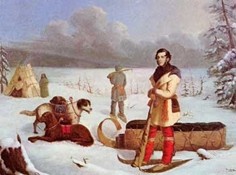
This course is an historical analysis of Canadian literature, art, and architecture, and the intellectual forces that have shaped Canadian society.
6 Credits
No prerequisite.
Cross-listed HIST 300.
312 Art and Politics
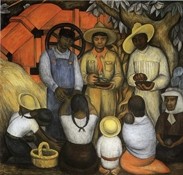
This course introduces students to what modern artists have to say about politics and what governments do and say about art. It provides some of the historical and theoretical tools needed to analyze the political role of art in our time. Students will examine literary works, painting, music, and architecture, and discuss specific policies on art.
3 Credits
No prerequisite.
Cross-listed PSCI 312.
321 Celtic Art
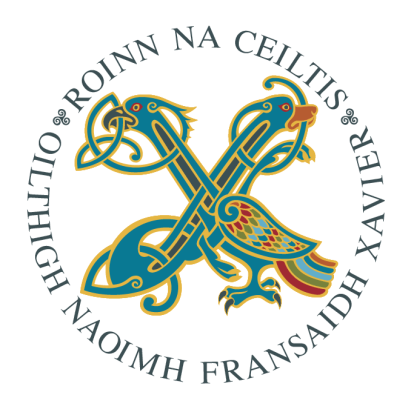
Weave your way through Celtic knots and horror vacui (fear of empty space), and discover the art of the Celts. From the Battersea Shield to the Book of Kells, we will trace our way through the extraordinary legacy of weaponry, jewellery, illuminated manuscripts, Celtic crosses, and Sheela-na-Gigs to arrive at a deeper understanding of the people who made them. Acceptable as a course in the Dept of History.
3 Credits
No prerequisite.
Cross-listed CELT 321 and ANTH 321.
331 Catholicism and the Arts I
332 Catholicism and the Arts II
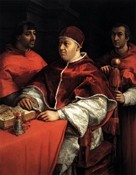
This pair of courses traces literary, musical, or artistic themes in great Catholic artists. Consideration is given to some of the following periods: early Christian art; medieval art, architecture, and music; Christian themes in Renaissance humanism and art; Christian themes in the Baroque; contemporary religious art.
Art 331 - 3 Credits
No prerequisite.
Cross-listed as CATH 331.
Art 332 - 3 Credits
No prerequisite.
Cross-listed as CATH 332.
333 Inquisitions, Heresies and Identity in the High Middle Ages
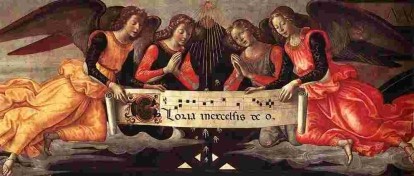
Popular culture often presents the Church as all-powerful and medieval inquisitions their chosen tool of oppression. Yet the historical reality is much more complicated than that. Through an in-depth 6-week role play, this class explores the interconnections between individual identity and societal expectations, doctrinal debate and dogma, heresy and resistance, inquisition and power.
3 Credits
No prerequisite.
Cross-listed as HIST 333.
354 Women, Art & Gender: Rewriting Art History

Recentering women in the history of art, this course critically examines the structures that excluded them and the narratives that erased them. It looks at how gender has shaped the discipline of art history and at texts that envision more inclusive methods. Students will draw on their experiments with looking techniques to write about women’s contributions to various visual and material cultures, from the discovery of butterfly metamorphosis to the secret “invention” of abstraction.
3 Credits
No prerequisite.
Cross-listed as WMGS 354.
356 Iconography of Christian Art: The Life of Christ
Iconography is the identification and interpretation of images. This course is an introduction to the iconography of Christian art, with an emphasis on images of the Life and Passion of Christ. The course will examine how images develop over history, and how they may be understood in light of historical events, changes in theological thought, and in the artist's own spirituality.
3 Credits
No prerequisite.
Cross-listed as RELS 353.
357 Iconography of Christian Art: The Saints
This course is an introduction to the iconography of Christian art, with an emphasis on images of Mary and the saints. The course will examine how images develop over history, and how they may be understood in light of historical events, changes in theological thought, and in the artist's own spirituality. Discussion will include how such images were used as objects of personal devotion but also for the conveying of important theological and social values.
3 Credits
No prerequisite.
Cross-listed as RELS 354.
383 Victorian Britain: Quakers, Queens, and Queers
The long 19th century was understood by Britons as ‘theirs’. An industrial powerhouse, grown on science and credit, Britain gained access to raw materials worldwide. Politically dynamic, British democracy went global, and a stable monarchy allowed for seemingly unparalleled Progress. Not everyone experienced this change in the same manner, however. It will explore how broad historical trends - changing ideals of citizenship and democracy, industrial growth, urbanism and the challenge of racial diversity - were experienced in this era.
3 Credits
No prerequisite.
Cross-listed as HIST 383.
400 Level Courses
400 level courses offer students specialized courses in both Art History and Art Studio. Topics in Italian Renaissance art provide the focus for a seminar class. The subject matter for this course becomes the starting point for students to pursue their own study and present their research to fellow classmates. Both Art History and Art Studio provide further opportunity for dedicated students to create their own focus of study.
Art History Courses
435 Seminar in Italian Renaissance Art

This course is an intensive investigation into an aspect of Italian Renaissance art. Topics may include, among others: Michelangelo and his biographers; Giorgio Vasari’s Lives of the Artists; Raphael in Rome; Renaissance art in Venice; Italian Mannerism. Students will learn to use and assess important primary sources from the Renaissance period, and will also examine the secondary scholarly literature in some depth.
3 Credits
Prerequisite: 371 Italian Renaissance Art I, 373 Italian Renaissance Art II, 142 Art & Society II, or permission of instructor
Timetable for Art courses offered in the 2024-25 Academic year.
Contact
2nd Floor Immaculata Hall
2360 Notre Dame Avenue
Antigonish NS B2G 2W5
Canada

